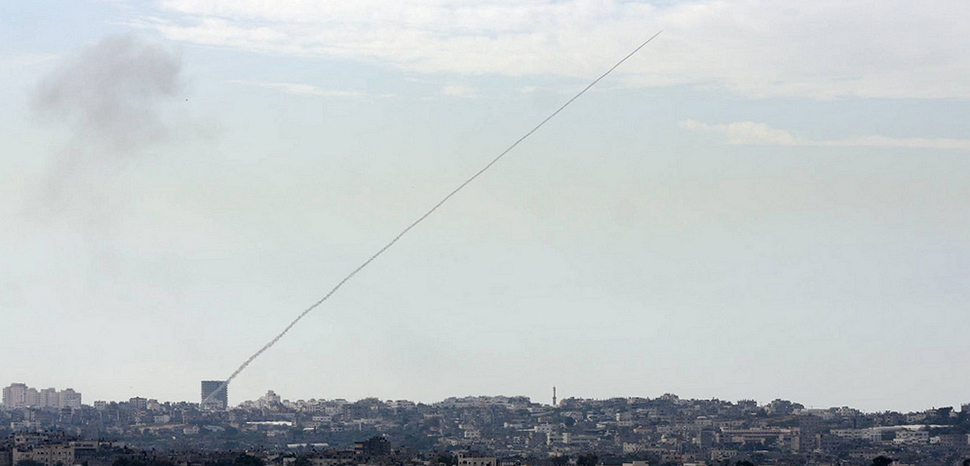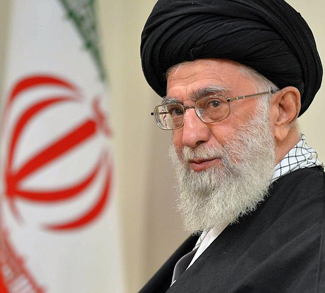The Middle East has long been an epicenter of geopolitical tensions and upheaval, with its complex dynamics influencing global peace and stability. As we move into 2024, it is imperative for the international community to recognize and prepare for the possibility of an even more turbulent Middle East. The ongoing conflict in Gaza has undoubtedly ignited a cascade of emerging regional tensions at multiple fronts that can further lead to a more unstable Middle East. The increasing tensions in the south of Lebanon; Yemen’s Houthi maritime attacks in the Red Sea; the increasing military confrontation between Iran and Pakistan; the intensifying fight in Sudan; the widening window of confrontation between Jordan’s air forces and drug smugglers in Syria; and increasing attacks on US forces in Iraq and Syria, along with simmering sectarian tensions in both countries – all of these developments reflect security challenges that can draw the whole region into an unprecedented conflict spiral that can have negative impacts beyond the Middle East.
The ongoing conflict between Hamas and Israel presents a precarious situation for regional stability. While the immediate focus of the international community remains on the dynamics between Hamas and Israel, it is equally important to consider the evolving implications of the conflict. It is especially clear by now that Hamas isn’t expecting a military victory; they aim for a “PR” victory. This situation is already creating a complex web of alliances, rivalries, and geopolitical interests, which will inadvertently lead to a military escalation involving Iran sooner or later. Iran has been known to exploit regional conflicts to further its own agenda, and an escalated situation involving Hamas and Israel is providing the opportunity for Iran to flex its capabilities and assert its influence. In a previous article, I discussed why Iran is the beneficiary of the conflict in Gaza while also confirming that any bet on Iran’s position toward the actual war in Gaza is obviously irrelevant. This is because it’s the regional and even global threat from Iran extends much further than just the confrontation between Hamas and Israel; rather, it emanates from the various proxy confrontation nodes across the Middle East, such as Lebanon, Syria, Iraq, Yemen, and Jordan. For just one example, consider the increasing clashes reported along the Syrian border over the past few weeks.
Captagon and Drug Smuggling
It has been reported that Jordan has recently conducted a successful airstrike over Syrian soil, targeting Iran-linked drug smugglers. Although Jordan has previously conducted airstrikes to counter drug smuggling from Syria as well as executing military campaigns across the Syrian border to counter smuggler attacks, the recent airstrike illustrates the extent of the threats posed by Iran-linked groups in Syria to Jordan and the wider region. This smuggling activity across the Jordanian-Syrian border intensified in December in terms of size and content (advanced weapons), as well as the direct participation of Iran-backed militant groups.
Over the past decade, Syria has garnered an international reputation for being among the world’s top producers and trafficking of captagon. Captagon, an illicit drug, has been a major security concern that poses significant risks to the Middle East region, particularly in Syria and the Gulf Cooperation Council (GCC) countries. In fact, Syria is believed to be producing up to 80% of the captagon pills worldwide. The issue has been critical for all Arab leaders to the extent that it has been somehow linked with reinstating Syria back in the Arab League. Yet this may prove difficult, as captagon production and trafficking is believed to have provided Syria a financial lifeline since its descent into civil war in 2011. The uncontrolled production and trafficking of captagon have become a significant source of revenue for terrorist organizations operating in Syria. These groups exploit the conflict in Syria to manufacture and smuggle this highly profitable drug, providing them with substantial funds to sustain their operations, recruit fighters, and conduct acts of violence regionally. Given the rippling effect of the conflict in Gaza and the influence of Iran and its proxy groups in Syria and Lebanon, it is highly likely that captagon trafficking across the Jordanian border will increase, prompting Jordan to step up its military action against such groups in Syria.
Iran’s Regional Proxy Network Activates
Increased volatility and conflict in Syria could also stem from new attacks on US forces in the country. Since October 17th, Iran-backed militias have attacked US troops almost 130 times in Syria and Iraq, raising the possibility of a full-scale military confrontation. Given that these militias are actually terrorist organizations that Iran fully support, they constantly endanger the region’s security. Furthermore, with Iran’s support, Iraq has recently pledged to end the presence of US troops in Iraq, which would not only allow Iran to further increase its influence in Iraq for its political agenda but also potentially provide ISIS with the opportunity to ramp up its capabilities once again given that one of the main missions of the US-led coalition forces in Iraq is to counter the threat posed by ISIS to Iraq and the region.
While assessing the recent activity of Iran-backed groups in Syria and Iraq, Lebanon cannot be overlooked. Lebanon is one of the states that Iran has had tremendous influence in for decades and controls its most influential armed group in the South, Hezbollah. Since the eruption of the Hamas-Israel conflict in Gaza, the south of Lebanon has been a hotspot for another potential direct military confrontation for Israel. Regardless of the border tensions in the south of Lebanon that have been going on for the past two months, the country faces the existential risk of being drawn into complete turmoil should its Iran-backed armed militias in the south be pushed into a full-scale war with Israel by Iran.
In this respect, history shows that Iran has the tendency to support and push its proxy groups in the region into armed conflicts while restraining itself from direct confrontation. This has been evident lately from the ongoing incidents by the Houthis in Yemen and Hamas in Gaza. However, it is worth noting that in the case of the South of Lebanon, if a full-scale armed confrontation takes place between Iran-backed militias and Israel, it will have a far more devastating impact on the region than that of the war in Gaza. This is because Iran-backed militias in Lebanon are far more organized and more globally networked, speak nothing of better-armed, compared to Hamas in Gaza.
Houthi Attacks in the Red Sea
On a different front, the Houthis in Yemen, who have full Iranian support, have expanded their offensive strategy, and increased their level of aggression since the conflict in Gaza broke out. This included launching drones and ballistic missiles toward Israel as well as commercial vessels passing via Bab Al Mandab toward the Red Sea. Even though most of the missiles launched by the Houthis have been intercepted by US forces, their actions have posed a major threat to the shipping industry, given that almost 10% of global trade is transported via vessels passing through the Red Sea and the Suez Canal. Shipping costs are already up by 300% due to the Houthi maritime attacks, which are likely to have negative economic implications on the final prices of goods transported worldwide.
In the same vein, Egypt’s Suez Canal revenues are down by almost 40% as a result of the Houthi’s threat in the Red Sea, thus providing Egypt with an unprecedented economic challenge given that the Suez Canal is one of the main sources of foreign currency for Egypt’s economy. The Houthis’ maritime attacks do not come as a surprise and they focus attention on a wider issue, namely that the Houthis’ armed capabilities do pose an undeniable and serious threat not only to maritime security but also to the safety of various GCC nations that Iran views as US regional allies. Therefore, there is a crucial need for an immediate and coordinated international response to combat the growing threat posed by the Houthis in the Red Sea and the region.
Joint US and UK forces have launched different strikes against the Houthis in an attempt to degrade Iran-backed militias ability to attack commercial vessels. Given the growing threat the Houthis pose to one of the most important global trade routes, such a US-led response was truly necessary. Furthermore, the Houthis armed capabilities, if not degraded, will sooner or later, under Iran’s influence, either be used to inflict more harm on commercial vessels in the Red Sea and/or target US strategic interests in the region, including targeting neighbouring Arab nations that are perceived by Iran as US allies. This has been evident from different attacks by the Houthis on the Kingdom of Saudi Arabia (KSA) and the United Arab Emirates (UAE) over the past few years, including the recent killing of four Bahraini soldiers across the Saudi border as a result of an attack by the Houthis.
The speed with which the US-led response can achieve its objectives and diminish the Houthis capabilities will determine how armed escalations in the region will proceed. In this respect, as far as maritime threats are concerned, the Houthis are reported to possess different classes of anti-ship ballistic missiles, including Iran’s anti-ship versions of Fateh 313 and Raad 500, which have a range of 450 and 500 km, respectively. Therefore, it presents a formidable threat to the shipping industry and all transiting vessels via the Red Sea. Unless such armed capabilities are quickly eliminated, the world will experience a rise in the Houthis maritime attacks in response to US strikes. Furthermore, the Houthis will very likely resort again to attacking neighbouring GCC nations in an attempt to pressure such nations to not support the US efforts in countering the maritime threats posed by the Houthis. It has been only a couple of days since the US-led forces launched a strike against the Houthis, and yet the group has already carried out a military drill near the Saudi border.
On another front, Iraq’s Haraket Hezbollah Al-Nujaba stated that US interests “won’t be safe” after the strikes on the Houthis in Yemen, thus implying that all Iran-backed militias in the region present a growing challenge and imminent risk for the region’s stability and security, especially since many of these militias and insurgent groups resort to irregular warfare and terrorist tactics to achieve their objectives. All that being said, maritime safety in the Red Sea is also facing a growing threat from the other side, East Africa, where tensions are growing between Somalia and Ethiopia as a result of the latter’s recognition of the independence of Somaliland in return for developing a port and naval base. The issue is already moving toward a potential armed conflict that can breakthrough at any moment. Different countries, including the United States, Egypt, Turkey, and the Arab League nations, have condemned the Ethiopian deal with Somaliland. However, how Ethiopia and Somalia, a country that has a long history of piracy and incubated terrorism, react to one another will have major implications on maritime security.
While the task of addressing, countering, and eliminating all the evolving threats in the Middle East is an uneasy one, it is unavoidable to collectively address and counter these threats; otherwise, the risk of an unstable Middle East will persist. Although US forces are primarily responsible for addressing many of the threats posed by Iran-backed groups in the region, including those in Syria, Iraq, and Yemen, more extensive defense and security cooperation is necessary. The developing military confrontation between a nuclear ambitious Iran and a nuclear armed Pakistan also adds a critical element to how the Middle East can be easily drawn into turmoil. US and regional Arab allies should further enhance strategic defense cooperation and regional capability development, which will contribute to effectively countering the emerging threats by Iran’s axis of resistance proxy groups. A unified, cohesive, and well-equipped military approach will deter Iranian aggression and reinforce stability in the region.
The views expressed in this article belong to the authors alone and do not necessarily reflect those of Geopoliticalmonitor.com.




